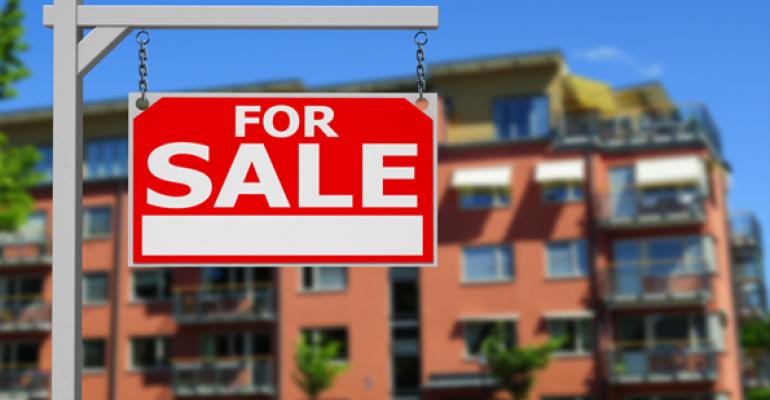Investors are looking forward to another strong year for apartment sales.
“Going forward, there is a bit of renewed optimism… and we are still at an elevated level when it comes to transaction volume,” says John Sebree, first vice president and national director of the national multi housing group for Marcus & Millichap.
Investors bought fewer apartment properties in 2017 than they had the year before—but 2016 was a record-breaking year for apartment sales. The total dollar volume of apartment sales in 2017 was still greater than the historical average. And with apartment properties still desirable and yields and interest rates still relatively attractive, 2018 seems poised to match it.
“There is still a hunger for yield by investors,” says Jim Costello, senior vice president for Real Capital Analytics (RCA). “I don’t see 2018 as being that much different.”
Large volume of sales, relatively
Sales of apartment properties started slowly in 2017, partly because of uncertainty about policy after the presidential election and partly because the huge volume of deals that closed in 2015 and 2016 is naturally hard to match. Investors bought $12.5 billion in apartment properties in 2017 (as of November) in the U.S., according to the latest data from Real Capital Analytics (RCA). That’s down 7 percent from the same period in 2016.
Investors closed 2017 on a roll, partially making up for the year’s slow start. The volume of properties sold in November was the second largest of any November in history behind only 2016, according to RCA.
In 2018, investors are expected to buy and sell apartment properties in roughly the same total dollar volume as 2017. “It’s not going up a lot, though it’s not going to drop either,” says Sebree.
Investors may also be more eager to buy and sell apartment buildings now that Congress has passed its first major reform of the federal tax code since the 1980s. Tax reform didn’t change much for the apartment business, but could have created major changes. Now that it has passed, apartment experts have less uncertainty about the future.
“It eliminates some concerns, and as a result we may see more owners coming to the market,” says Sebree.
Cap rates stay low
Experts do think that cap rates for apartment properties are finally now about as low as they are likely to get. But they are unlikely to rise much either, even though interest rates are likely to rise in 2018—especially now that federal tax reform has passed.
Interest rates will continue to rise. The Federal Reserve has already raised its short-term benchmarks rates and is planning more 25-basis-point increases over the coming year, especially if inflation begins to rise after tax reform. “Tax reform is a huge fiscal stimulus. The Fed is going to have to respond with some higher rates,” says Costello.
Rising interest rates usually push cap rates higher, as investors eventually demand higher yields from their investments to make up for their higher cost of capital. But the effect is not immediate. In the short term, cap rate are likely to stay low.
“Property is a hedge against inflation. Investors want to lock in an interest rate at a low number,” says Sebree.
Investors turn to smaller markets and lower properties
More than half (55 percent) of the apartments properties bought and sold for more than $1 million in 2017 priced were located in secondary and tertiary markets. That’s up from 42 percent in 2010.
“You have got a lot of money looking for yield,” says Sebree. Because of all this additional investment, the average cap rate for apartment properties has fallen to about 6 percent in secondary and tertiary markets, down from about 8 percent in 2010. At the same time, the cap rate for apartment properties in prime markets has stayed in the 4 percent range. The difference in cap rates between apartment properties in primary markets and properties in secondary and tertiary markets is now about 190 basis points, down from 370 basis points in 2012, according to Marcus & Millichap.
“The cap rates in preferred markets really haven’t changed as much—they were already at such low levels,” says Sebree.
The cap rate for class-B and class-C apartment properties in all markets has also fallen on average to about 5 percent from about 7 percent in 2010.

